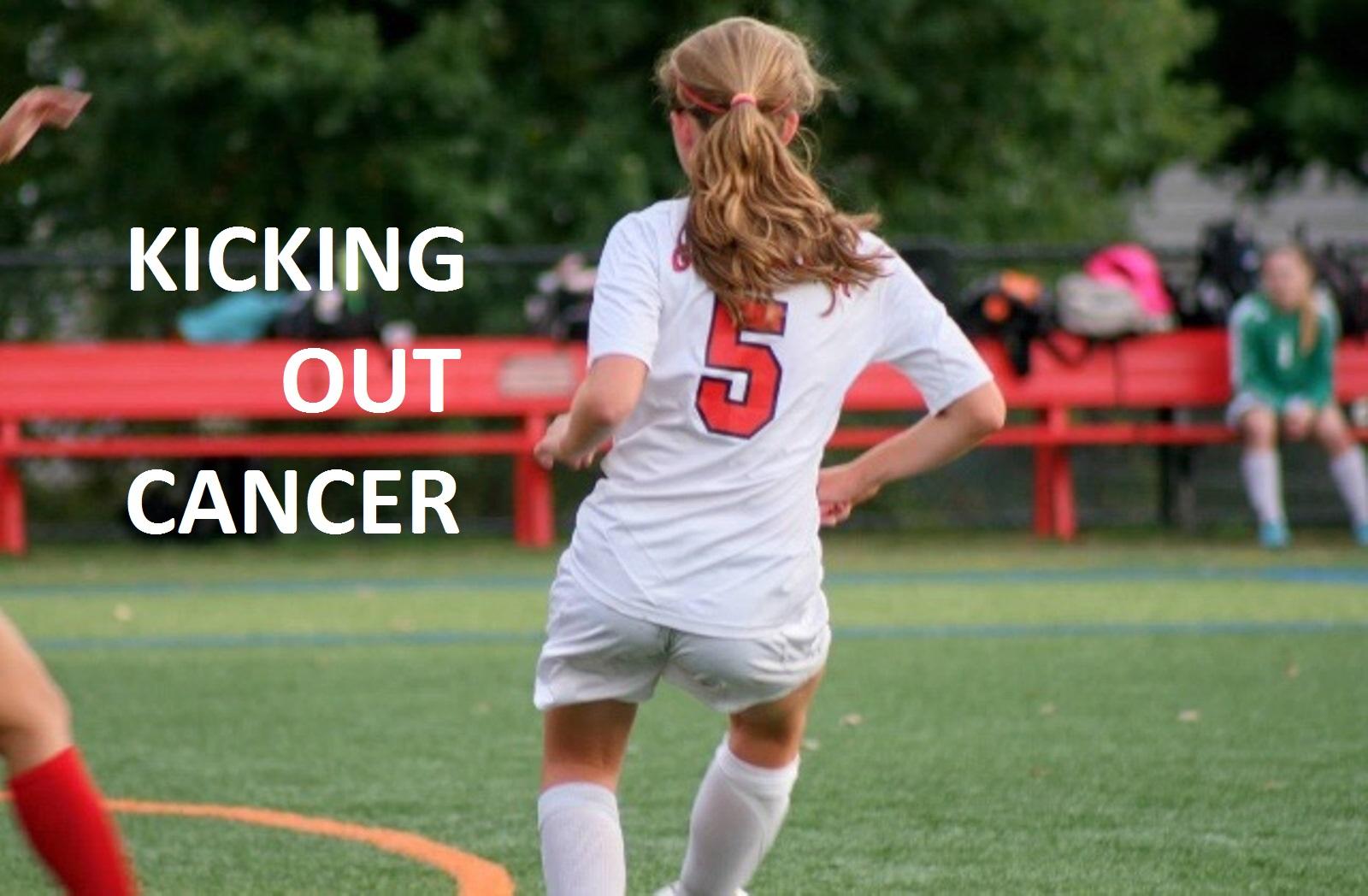Kicking out cancer
Freshman Jean Walter was six years old when she was first diagnosed with LCH. Today, she's a rising star athlete.
May 8, 2015
It’s state sectionals for winter track and Jean Walter, freshman, is running the mile. She’s head-to-head with a rival runner from Newton in her heat — when runners are split into groups because there’s not enough space on the track. They cast a sideways glance at one another, vying for the finish line.
Jean’s sister, Alex, and the rest of her family cheer on the sidelines, clapping and calling her name. Behind her family, stand the friends and families of other runners. Jean and the girl from Newton had always been close in time, racing against one another at numerous meets; today, though, Jean was racing against herself as much as against this rival. She wanted this race to be the one in which she beat her personal mile time of 6:00 minutes.
With a burst of energy, Jean passed her rival on the third lap in the last 200 meters, winning the race in her heat and beating her previous time.
Jean Walter started running the summer before fifth grade, right after she made the Shooting Stars soccer team. Her initial goal was to stay in shape for soccer season but, with motivation from her dad who was a track coach in Demarest, Jean decided to join the middle school cross-country team in sixth grade.
“That’s probably the first time I really started liking running,” Jean says. “I do it because I like to run and also it keeps me in really good shape for soccer. It’s also a really fun sport.”
Although Jean loves running, she identifies herself more of a “soccer person.”
As a young child, Jean always enjoyed playing sports, one being soccer. With her newfound love, Jean tried out for the Shooting Stars team, a recreational soccer team. Alongside Jean was her sister Alex, who also tried out for the team.
Jean admits that when she started soccer she wasn’t as good as she hoped to be. But, like many athletes, she practiced as much as she could and gave the sport her all.
In seventh grade, Jean tried out for middle school soccer and gained a spot on the team giving her motivation to try out for the high school soccer team. Today, as a freshman, Jean plays defense, where she keeps the other team from scoring, and sometimes forward, where she tries to score goals.
Although it is one of her many loves, Jean Walter can’t pinpoint exactly what she loves best about sports. Overall she loves the feeling of accomplishment when she finishes a race or plays a soccer game.
Many people in Jean’s life can agree that she is an accomplished athlete.
According to Alex, Jean is a very talented soccer player who devotes a lot of her life to sports. One of the most salient characteristics is how she puts extra effort into her soccer games and “isn’t afraid of bashing skulls together and hitting girls twice as harder than they hit her.”
One of Jean’s friends, Dinos Andreou describes Jean as a competitive athlete who doesn’t give up easily, one who works hard and doesn’t give up when there is a bleak outlook. Jean and Dinos met in ninth grade, when they had many of the same morning classes.
As a friend, Andreou believes Jean is a dependant and reliable person who “takes jokes wholeheartedly.” Jean never acts mean, making her even more fun and easier to talk with. She can also be extremely creative as she has a “complex and fantastic imagination.” In fact, Jean Walter shows her creativity through drawing and sketching.
As most sisters do, both Jean and Alex have a special bond, perhaps even more so since the two are twins.
Alex believes that Jean is not only a loud and outspoken girl but that she is also responsible. For example, Jean empties the dishwasher without being asked to and, although she can procrastinate, she gets all of her work done efficiently.
But back to the moment when Jean wins her race, beating the girl from Newton. Not only did she win her heat, but she also beat her personal time. She’s smiling proudly, happy about her two successes. Her family is with her and cheering along.
All this is happening at the Armory Track and Field Center on 160th street, down the street from the Columbian Presbyterian where Jean Walter, high school freshman and star athlete, was treated for Langerhans Cell Histiocytosis — also known as white blood cell cancer.
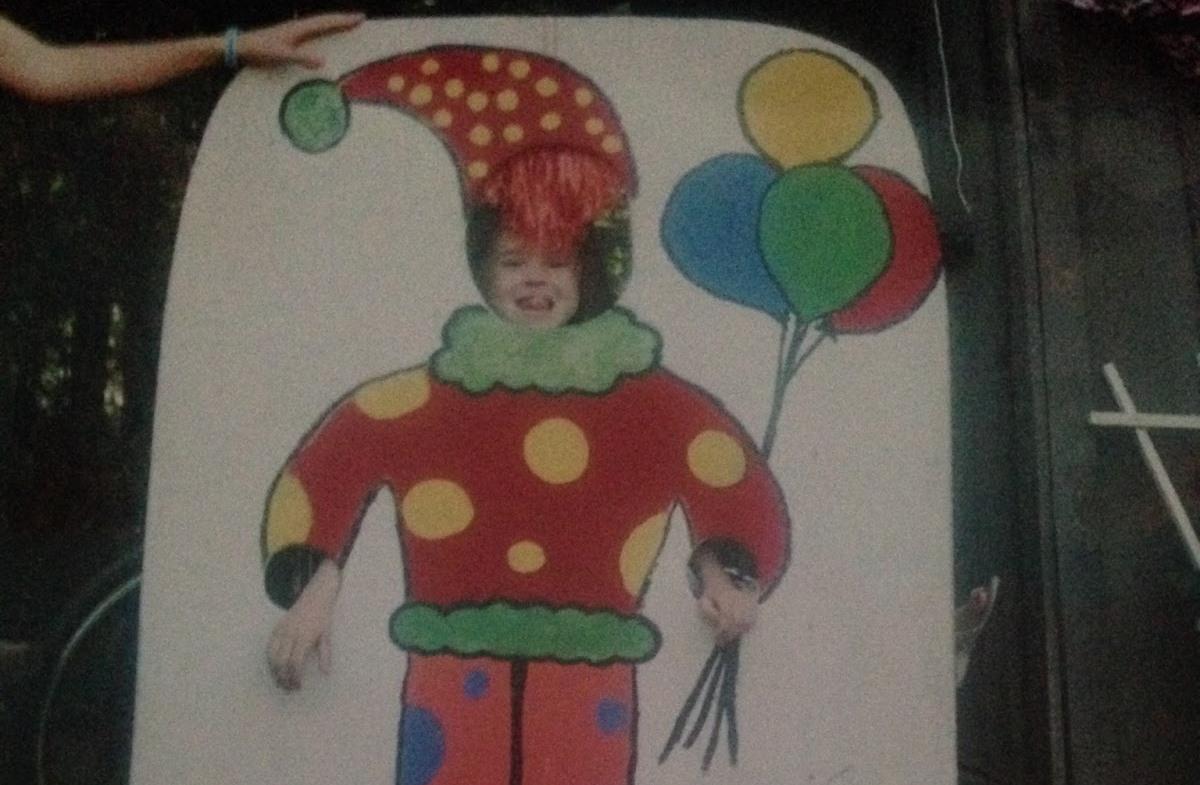
Photo Credit: Walter Family
As an energetic child, Jean was always looking for a fun experience.
Growing pains
It’s March of Jean’s first grade year and she’s like any other 6 year old kid: bright, energetic and athletic. Before she was a soccer player and a runner, Walter used to do gymnastics: her grandfather even came to her recitals.
At one of her recitals Walter was performing a vault while her grandfather was watching, standing by the sidelines. When she landed the stunt, she completely favored her left leg, putting all her weight on to her right leg. This was when Walter’s grandfather knew something wasn’t right.
Months before her gymnastics recital, Jean had gone to three different doctors for knee pains. All three had a range of possible explanations for her pain. The most common was that Jean was simply having growing pains like most kids her age. These doctors did some x-rays and believed that there was nothing wrong. Only a few believed that Jean could have leukemia, a more dire diagnosis.
“They said, ‘We don’t know what it is until we actually open up the bone and take it out’. It could have been so many horrible, terrible things,” Kathleen Walter, Jean’s mom, said. Kathleen teaches history at Glen Rock High School.
Finally, Jean and her family met with a fourth doctor who performed a bone scan. A bone scan uses a radioactive dye that is injected into the patient so that the scan can be performed. That’s when Jean’s real diagnosis showed.
“You could actually see that there was definitely a tumor,” Kathleen Walter said. The tumor was located inside of Jean’s femur, the bone inside the thigh. Although the tumor was benign, it was extremely big, around the size of a quarter, and it crushed the nerves running down Jean’s leg. This explained the pain she felt in her knee. It was then confirmed that Jean had Langerhans Cell Histiocytosis (LCH).
Although it would be a couple years until Jean fully understood what was happening in her body, her mother and father both knew the road their entire family had to go down, and they knew about the great responsibilities that they had to take on.
Remembering the day that she and her family heard about Jean’s health, Kathleen believes she reacted like any mother.
“When we got the diagnosis and they finally figured out what she had, the first thing that I yelled was ‘Where does it come from? Is it genetic? She has a twin! Should I bring her twin in?’”Kathleen recalled. “It’s funny because we were taking her around and taking her out of school to all these doctors, and the doctors never knew she had sisters or had a twin.”
After she learned about her daughter’s health situation, Kathleen immediately knew she had to bring her daughter to the foremost hospital with the best doctors and hospital staff. Throughout the whole time that Jean had LCH, she was brought to over four hospitals in search of the best treatment.
While Walter took care of Jean, she also had to make sure that her other two daughters, Alex and Casey, didn’t feel left out. The Walter parents had told the girls that Jean was experiencing growing pains and that it was normal.
Alex was young and didn’t quite understand that her sister was really sick. But she later found out that her sister had cancer, specifically LCH.
Alex and Casey both understood the amount of stress their sister was under during the time she was sick and, although they also understood why Jean was getting all the attention, Alex remembers getting jealous towards the end of first grade. Alex was only six years old at the time.
Alex said that, many times, siblings of cancer patients – or any disease – would feel left out or lack attention. For Alex, though, this never happened because she and her sister were extremely close.
Overall Jean’s whole family was always there for her, trying to support her in any way they could. Although they worried about her health, nutrition and “didn’t sleep a lot”, Kathleen says that because she brought Jean to the best doctors, it eased some of her stress.
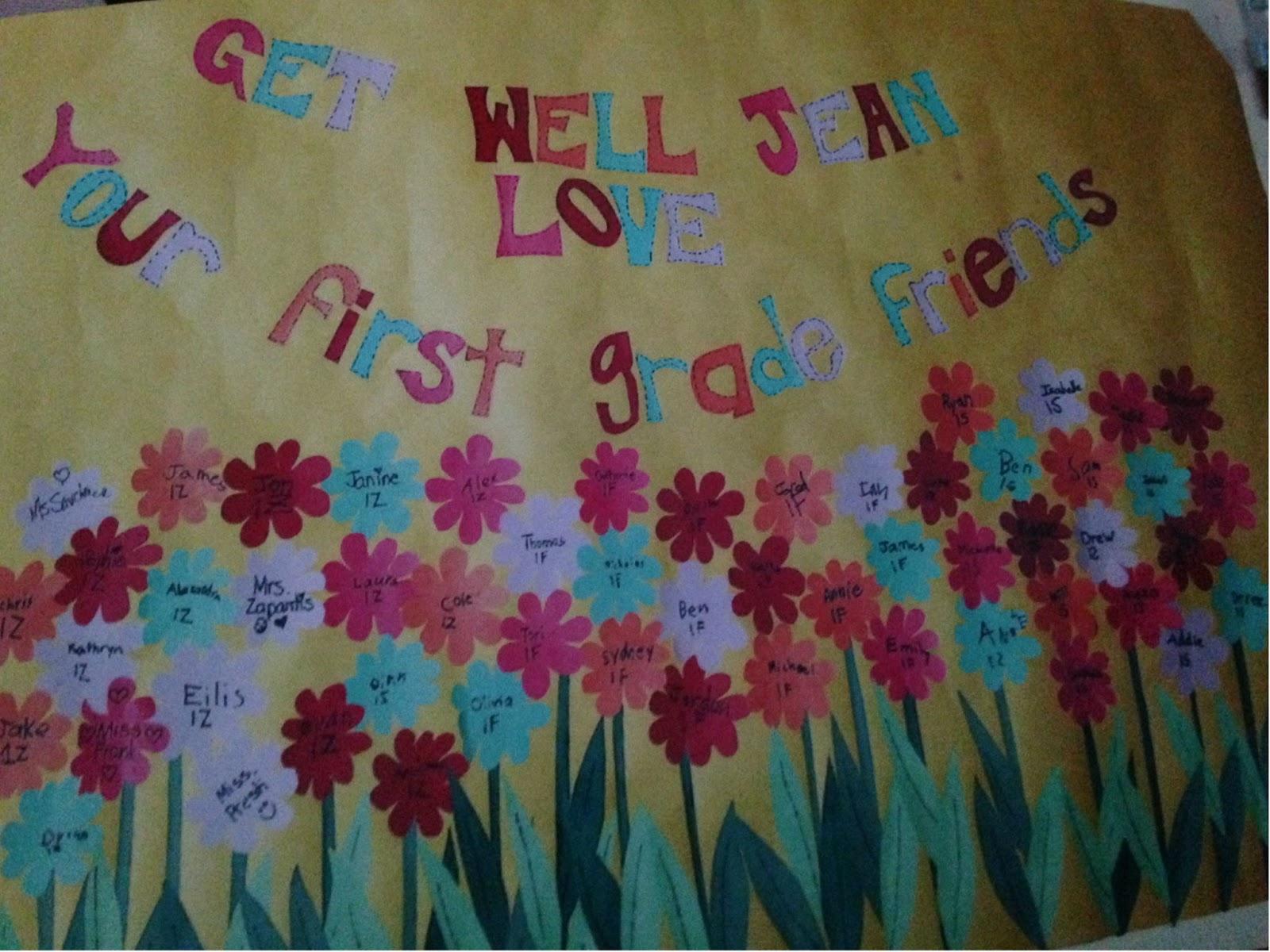
Photo Credit: Walter Family
When Jean was hospitalized with LCH her first grade classmates made her a ‘Get-Well’ poster which she still keeps in her room to this day.
Her condition
As Kathleen Walter brought Jean to the best doctors, she was also educated about what LCH really was and how it would affect her daughter.
LCH is one of the many types of Histiocytic Disorders and it is one of the most common. Many histiocytic disorders occur when an overproduction of white blood cells happens in the body. The overproduction of these white blood cells are called histiocytes and can lead to organ damage and tumor formation.
In LCH, specifically, the body produces too many immature Langerhans cells. Langerhans cells are a type of histiocytes that help the body fight infection. The build up of these Langerhans cells can lead to organ damage and tumor formation, just as any histiocytic disorder.
Although LCH can happen to people of any age group, including adults, the cancer is most commonly found in children. LCH is often misdiagnosed at first, as seen in Jean’s case, because the symptoms of LCH can be mistaken for another injury. Sometimes patients don’t even display any symptoms, which makes diagnosis even harder. If patients do display symptoms they are usually characterized by skin rashes, bone lesions, lung dysfunction, liver dysfunction, spleen dysfunction, excessive thirst, excessive urination, chronic infections in the ear, loose teeth and swollen gums.
Although treatment is sometimes not needed at all, other patients may need chemotherapy. Jean was one of these patients where chemotherapy was a necessary part of her treatment. LCH found in the skin and bones is describes as a low-risk disease because of the low mortality rate and the fact that many patients will survive. If LCH is found in the spleen, liver, bone marrow or lung it makes the disease harder to treat, making it high risk.
“The big thing is that if you don’t catch it you could destroy the bone,” Kathleen said. If her family hadn’t figured out that Jean had LCH, she could have been seriously hurt. If Jean had gotten hit in her knee, then her bone could’ve been crushed resulting in growing problems and more surgeries.
Most LCH patients also have to go through a follow-up appointment to make sure there are no more complications such as, skeletal deformity, liver problems, lung problems, endocrine abnormalities, dental problems or neurological dysfunction.
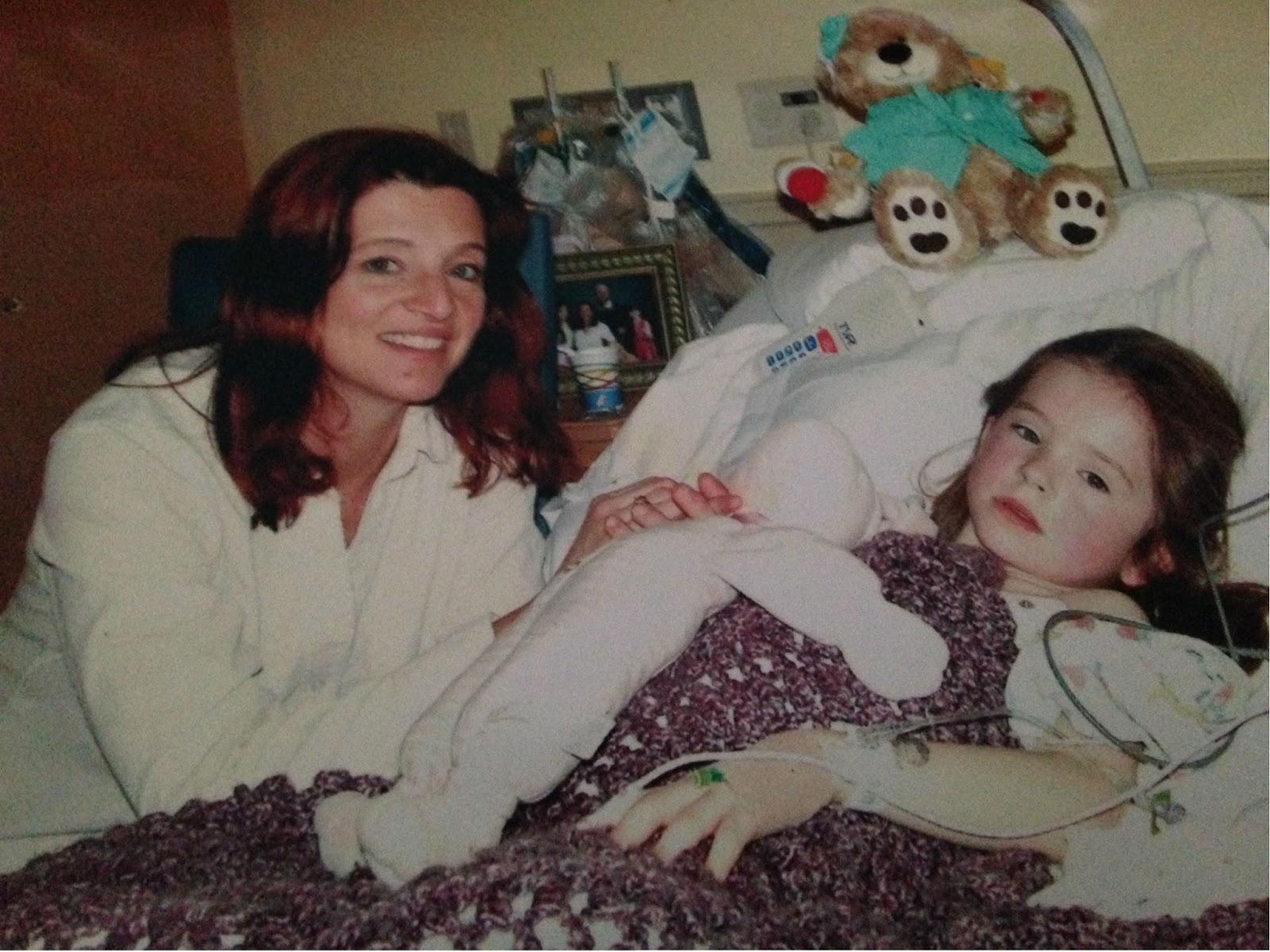
Photo Credit: Walter Family
Many times, Kathleen would stay with Jean at the hospital after big surgeries to comfort her daughter.
Complications arise
During Jean’s treatment for LCH, she had a port catheter surgically implanted under her skin, right below the shoulder blade.
Usually when patients are given medicine, they receive it through an IV: a needle inserted into the patient’s vein to get liquid and medicine into it.
For chemotherapy, the regular IV isn’t enough to keep the caustic drugs inside a patient’s body because the IV doesn’t have a tight seal. Since the doctors don’t want the medicine to go to any other part of a patient’s body, they implant a port catheter.
A port catheter has a rubber septum where the doctors can put in a needle and directly send medicine into the patient’s vein. The vein is connected to the port by a catheter, sealing of the connection between the tubing and vein.
It was Jean’s second to last chemotherapy treatment that she was ever supposed to have. Her father and mother had both been going to the hospital, switching off every other week. At the time, it was Jean’s father who was with her when the doctors were just about to put the needle into the port catheter.
“The chemicals started to drip into her port and she started to get very upset because there was this really painful burning sensation.” Kathleen said.
The doctors realized that Jean’s port catheter had broken at some time between chemotherapies, allowing the chemotherapy chemicals to travel through Jean’s veins and into her heart. It hurt a lot.
While Kathleen was teaching, she got a phone call from the hospital, telling her what had happened to Jean. She described it as the most disturbing thing that had happened to her, hearing about a new complication happening to her daughter. In an attempt to calm her, the doctors told Kathleen that the port catheter breaking was a common issue.
As soon as she put down the phone, Kathleen ran out of her classroom and told the office that she needed to leave immediately. Her hands were shaking and her brain wouldn’t cooperate while she tried to grab her bag and keys. Luckily for Kathleen, James McCarthy, the former principal of the school, already had his coat on, his keys in hand, and was ready to drive Kathleen to to the hospital.
Jean said the impromptu surgery was “not fun” and, after it was finished, she had to stay still for four hours. Kathleen stayed with Jean the whole night, and she explained that it was one of “the biggest things that scared Alex” since her mom didn’t come home that night.
Even after the port catheter was surgically removed, Jean had to go back to a couple doctors for a while. During her time at the hospital, Jean was still able to do all her school work with the help of a home instructor, and she even made a new friend.
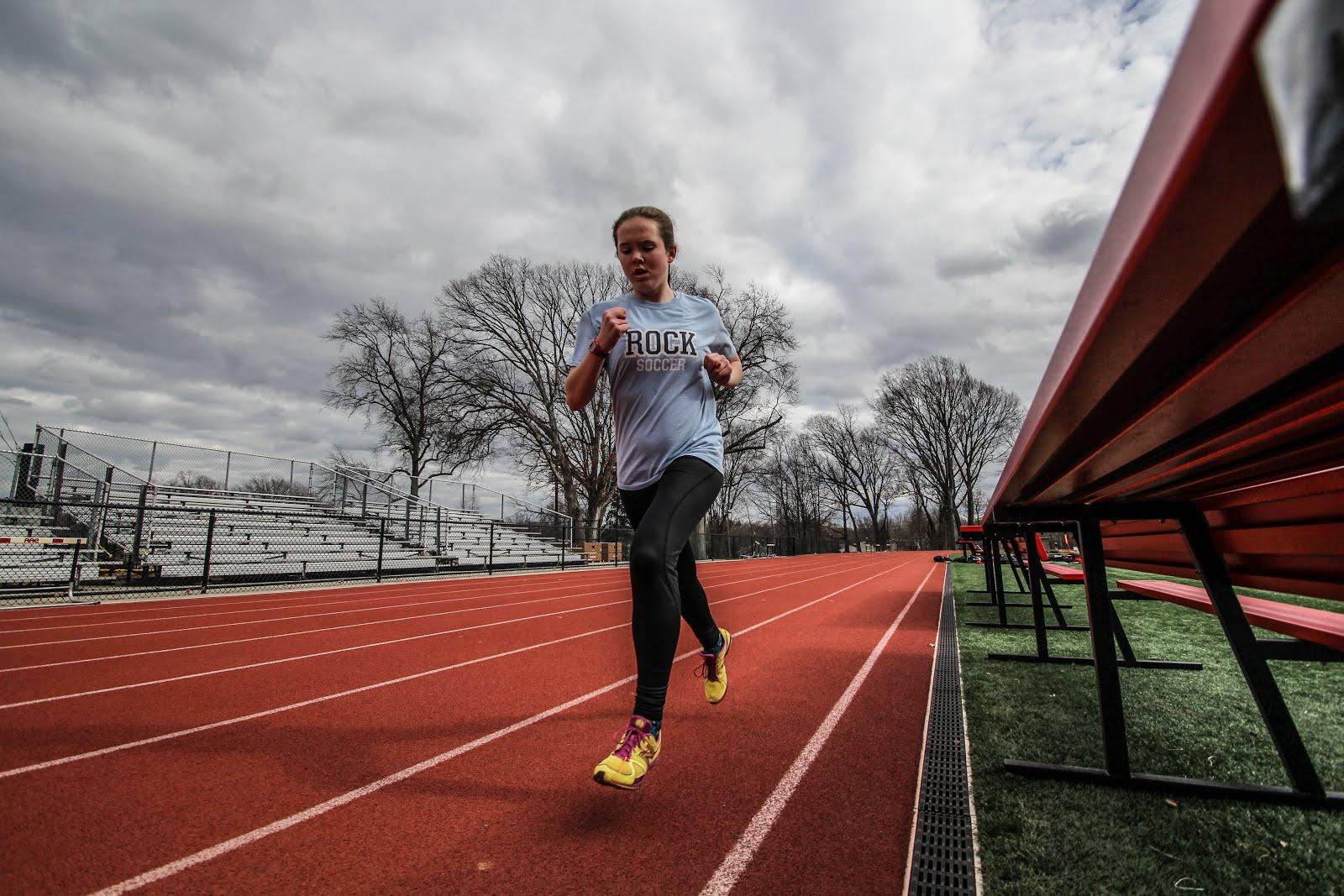
Photo Credit: John Scialdone
As a dedicated athlete, Jean plays both soccer and runs track, putting extra effort into every game and every meet.
Recovering
At seven years old, Jean Walter would sit in a chair and watch as chemicals dripped into her.
Her mother, Kathleen Walter, wanted to do anything she could to make the experience more tolerable. She would allow Jean to play video games, even though she was normally “pretty strict about using video games and iPads and electronics.” Jean played the Hannah Montana handheld video game because, at the time, Hannah Montana was Jean’s favorite.
During one of her treatments, Jean was playing her video game and waiting for the chemotherapy to be over, when she looked next to her. The girl sitting beside her was there for the same reason as Jean: chemotherapy. She looked to be about nine years old and it turned out that the girl, Brianna, also enjoyed Hannah Montana. Jean and Brianna started to form a friendship and would play the Hannah Montana video game while they both sat in the same chair every week.
While Jean and Brianna bonded over their shared love of Hannah Montana music, both girls moms noticed their daughters’ growing friendship. Kathleen remembers one day, when she was worrying about her daughter, that Brianna’s mom was also having the same reaction. Kathleen started talking to Brianna’s mom and also started her own friendship.
Kathleen describes Jean and Brianna’s friendship as a way “of looking to entertain each other through the hours that you have to sit there and let the chemicals drip into you.”
Jean’s chemotherapy treatment was every Wednesday afternoon and each week she was able to play the Hannah Montana video game with Brianna. The times with a friend helped to make the pain a little more bearable for Jean and the rest of the Walter family.
As time moved onward, Jean started to take control of her own treatment.
After most patients’ treatments were over for the day, nurses would pull out the needles. Jean, on the other hand, would refuse to let the nurses pull out her needles.
Instead, Jean would pull them out herself. For Kathleen Walter, watching her daughter pull out her own needles after chemotherapy was “weird to watch,” but Kathleen believes that these types of experiences that Jean had to endure as a child allowed her to become a stronger person.
To her mom, Jean is one soccer player “who hits hard, bashes in and has no fear about plowing into people.” The same applied to her treatment.
And her homework.
Jean would still do her schoolwork, whether she was at home or in the hospital. Many times her hospital bed was cluttered with books and worksheets. One of Jean’s goals when she had her chemotherapy treatments was to never miss school on Thursday since her treatment was every Wednesday. She never missed a Thursday.
Eileen Besser, a teacher in the middle school and “best friend” to Kathleen, would give home instruction to Jean. With help from Eileen Besser and her motivation, Jean was always in higher level math classes and in the gifted and talented program.
Besser gave Jean home instruction when Jean was in first grade and taught her several subjects. Each day, Besser would go over to the Walter’s house and spend two hours teaching Jean what she had missed in school. When Besser gave Jean home instruction, she noticed that Jean thoroughly enjoyed reading.
“She was always excited to see what new books I would bring along for her to read independently,” Besser said. Besser’s daughter also lent Jean some of her books.
When Jean wasn’t in the hospital or getting tutored by Besser, she would spend time with her sister, Alex.
In first grade, Jean and Alex both believed “that wheelchairs were the coolest things around.” When Jean was in her wheelchair, the two sisters would play a game called Super Mrs. Wheelchair. Alex would wheel Jean around and together they would fight “bad guys” on the patio of their backyard.
A couple months after Walter’s port catheter was removed, she finally started to feel better and recover from LCH. Although her recovery was long, Kathleen remembers that Jean “popped back very quickly.”
In second grade, the whole Walter family all bonded together to help Jean through the experience. Kathleen, Alex, and Casey (Jean’s younger sister) all cut their hair short so that if Jean’s hair did fall out, a side effect of chemotherapy, she would be just her family members. Luckily for Jean, her hair never did fall out.
Patients who undergo chemotherapy will sometimes have their white blood cells destroyed, so Jean had to be given different medications to rebuild her immune system. With her fragile immune system, the Walter family had to be careful to not bring germs home from school. Even common illnesses, like a cold, could have had horrible effects on Jean.
One of the medications that Jean had to take had a side effect called “pan face.” This side effect caused her face to swell up, but, fortunately for Jean, her face returned to normal quickly.
While Jean was recovering, Kathleen began to get involved in different fundraisers. When Kathleen started teaching here, some seniors had asked her to take over the Relay for Life program. The Relay for Life program is a cancer fundraising event created by the American Cancer Society.
At the time, Kathleen had no idea on how to run the program but because she knew it was for a good cause and since the American Cancer Society provided Jean with support when she was in the hospital, Kathleen kept on running the program.
“It just kind of grew into a life of its own,” Kathleen Walter said. Since then, she has been the Relay for Life club advisor for six years, has run Relay for Life for the entire town of Glen Rock, and is included in the Teachers Relay for Life. Whenever there is a fundraiser in town, Kathleen is one of the first people to participate. Kathleen feels that her work with Relay for Life is her way of “giving thanks back” and “keeping karma on the positive side.”
Balancing everything that went around Kathleen was hard; being a coach, teacher and a mother. There were times when Kathleen barely got any sleep.
Many times when Jean was in and out of the hospital, Alex wouldn’t get as much attention as she should have.
At the time when Jean had her first surgery, Kathleen had been coaching Alex and Jean’s softball team when the sisters were in first grade. Yet because Jean had to go to the hospital many times, Alex would be dropped off at the softball game, by herself.
“Today, Kevin and I never let the kids play a sporting game without one of us there,” Kathleen said.
It has been two years since Jean’s last checkup and since then Kathleen Walter believes that her daughter has recovered 100 percent. For five years, Jean had to go through multiple MRI’s and treatments but now the fourteen year old athlete is an extremely healthy and happy teenager.
Kathleen and the whole Walter family are especially thankful that Jean is healthy because their daughter “made it through” her illness.
“There’s times where you feel blessed,” Kathleen said.
